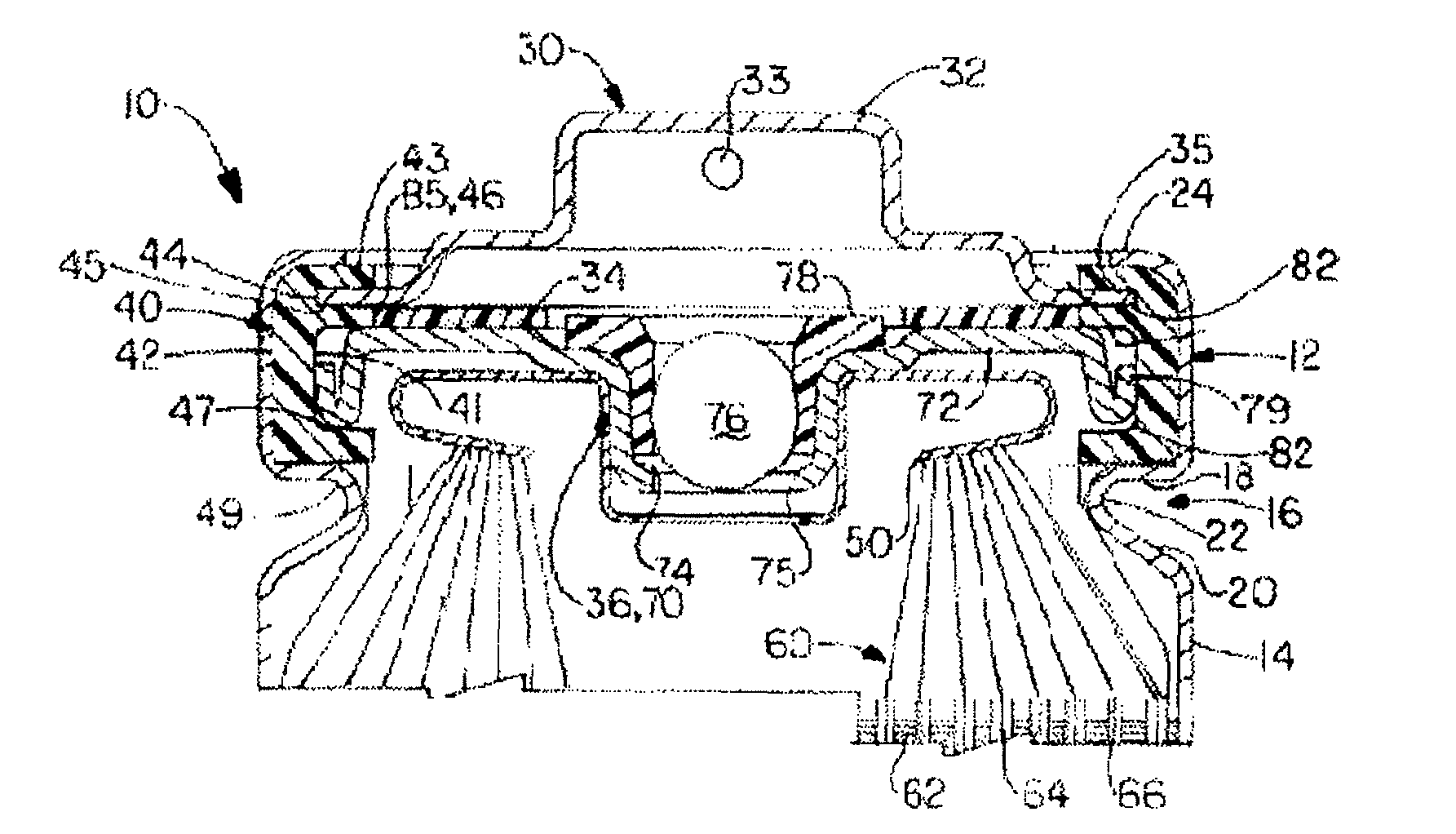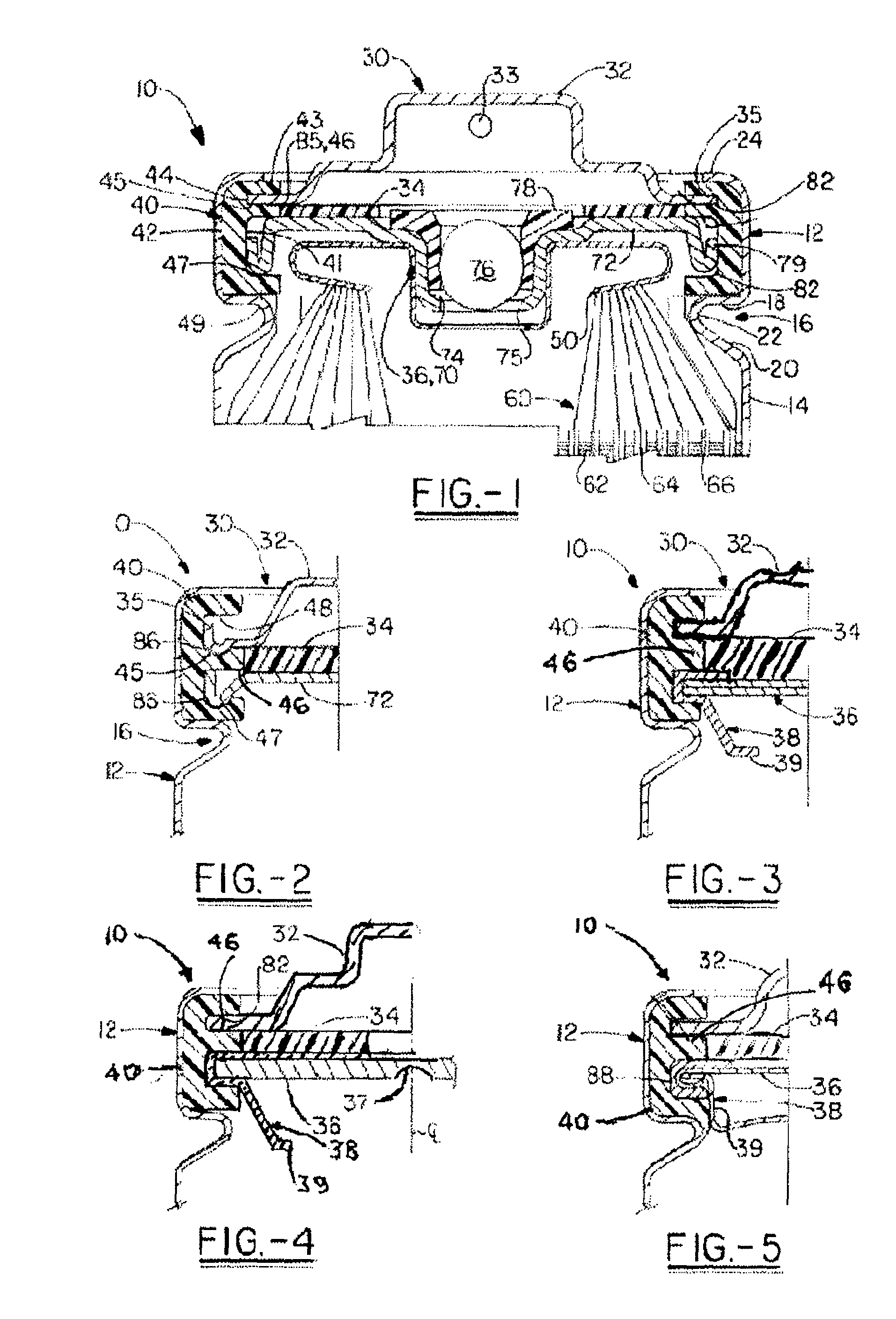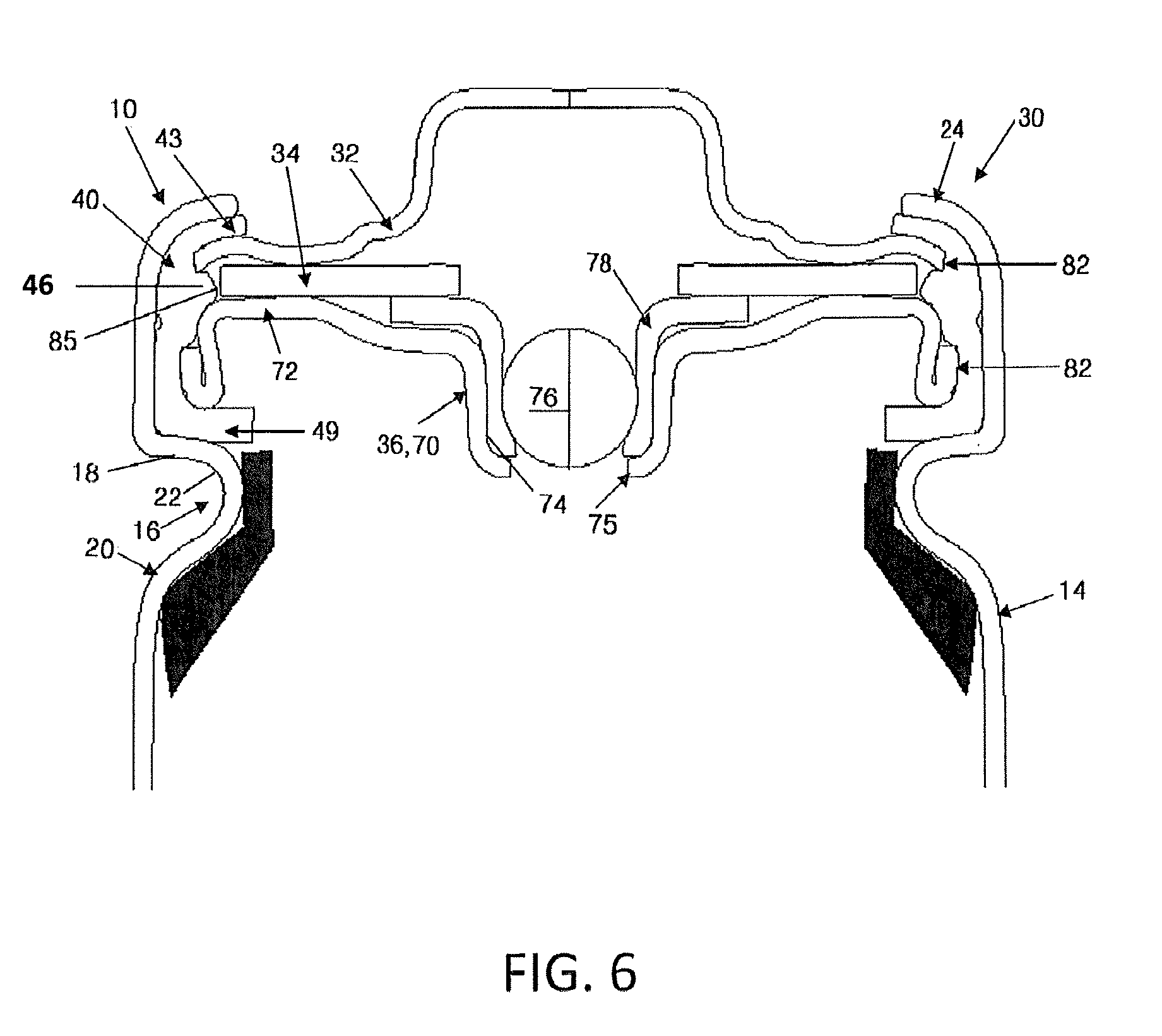Closure assembly for electrochemical cells
a technology of electrochemical cells and assembly parts, applied in the direction of cell components, vent arrangements, batteries, etc., can solve the problems of adversely affecting the activation of the ptc, improper installation of cells, and excess heat generated by the ptc device, so as to maintain reliable, compressive sealing forces, and reduce the surface area or shape of the ptc device.
- Summary
- Abstract
- Description
- Claims
- Application Information
AI Technical Summary
Benefits of technology
Problems solved by technology
Method used
Image
Examples
Embodiment Construction
[0030]As used throughout this specification, the term “electrochemical cell” is afforded a broad meaning, including any system capable of producing electrical current with a positive electrode, a negative electrode, a separator and an electrolyte, although the invention is most applicable to systems using nonaqueous electrolytes. A cylindrical container is any tubular container, with at least one open end, whose axial height is greater than its diameter. In the context of the gasket, a “protrusion” or “projection” is a horizontally-oriented feature that projects radially inward from the axial sidewall of the gasket; as such, a protrusion is structurally and functionally distinct from a flange oriented at the top or bottom of the gasket (irrespective of whether the flange is crimped or positioned in a radial direction or more of an axial direction).
[0031]The invention relates to electrochemical cells, preferably containing lithium or lithium alloy as an electrochemically active mater...
PUM
| Property | Measurement | Unit |
|---|---|---|
| temperature | aaaaa | aaaaa |
| temperature | aaaaa | aaaaa |
| wall thickness | aaaaa | aaaaa |
Abstract
Description
Claims
Application Information
 Login to View More
Login to View More - R&D
- Intellectual Property
- Life Sciences
- Materials
- Tech Scout
- Unparalleled Data Quality
- Higher Quality Content
- 60% Fewer Hallucinations
Browse by: Latest US Patents, China's latest patents, Technical Efficacy Thesaurus, Application Domain, Technology Topic, Popular Technical Reports.
© 2025 PatSnap. All rights reserved.Legal|Privacy policy|Modern Slavery Act Transparency Statement|Sitemap|About US| Contact US: help@patsnap.com



